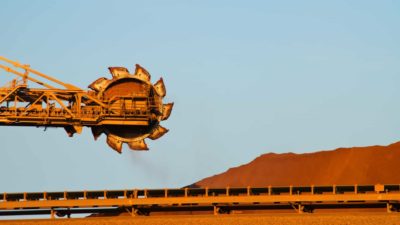Australia is often called the lucky country with its abundance of resources and a relatively small population. Another Australian mining company may soon get its turn in the limelight. It's called North West Phosphate and it could tap into growing demand.
What is phosphate used for?
Phosphate is a useful commodity. While a lot of it is used in the fertiliser industry, as well as animal feed supplements and industrial products like detergent, there is also the potential for the material to be used for phosphate batteries.
As reported by the ABC, North West Phosphate managing director John Cotter said:
I don't think anyone's really got their heads around how big that market is going to be. Everyone knows, you have a phone in your hand, it's a lithium battery.
Phosphate batteries, a little bit like vanadium, provide a slower discharge of energy to power your trains, your cars, your big gear and that market is going to grow quite significantly.
They reportedly could be better batteries than lithium, though I'm not an expert on battery technology.
North West Phosphate's plan
The company is working on one of Australia's largest phosphate deposits. It says it has the largest phosphate resource holding in Australia and "is committed to improving availability of this vital resource for agriculture both domestically and internationally."
There has reportedly been a decrease in the amount of 'quality' phosphate mined and there are also more investors and customers looking for ethically mined phosphate. This opens the door for Australian mining projects. They don't want slave labour to be involved in the supply chain. Cotter explained:
Up until recently, countries like Morocco and China essentially dominated the market but the prices are currently at a sweet spot for us.
That is being driven by growing populations that need to be fed and therefore a growing need for fertiliser coinciding with a decrease in the quality of phosphate coming out of those major producers.
The business holds approximately 65,000 sqm of tenements in north-west Queensland. One of the largest sites is Paradise South, and it's spending $350 million to mine there.
The ABC reported that the Paradise South mine will include a processing plant to produce phosphate concentrate that would be trucked to Mount Isa, then transported via train to Townsville and Darwin where it would be exported to Southeast Asia and New Zealand.
Growth of demand expected in the long term
The growing global population could require more fertiliser because of greater food consumption, as well as animal feed, natural fibres and biofuels. North West Phosphate suggests rock phosphate demand is closely linked to this increasing demand.
The company said:
Total fertiliser demand is forecast to increase from 197 million nutrient tonnes (N + P2O5 + K2O) in 2020 to 275 million nutrient tonnes in 2045. The long-term annual growth rate from 2020-2045 is forecast at 1.3% per annum.
Is North West Phosphate on the ASX?
The phosphate miner is not on the ASX at this stage, though there's nothing to say it can't make an appearance in the future. There are a few other phosphate mining businesses on the ASX, though they have very small market capitalisations and may have more risks than a typical ASX mining share.









